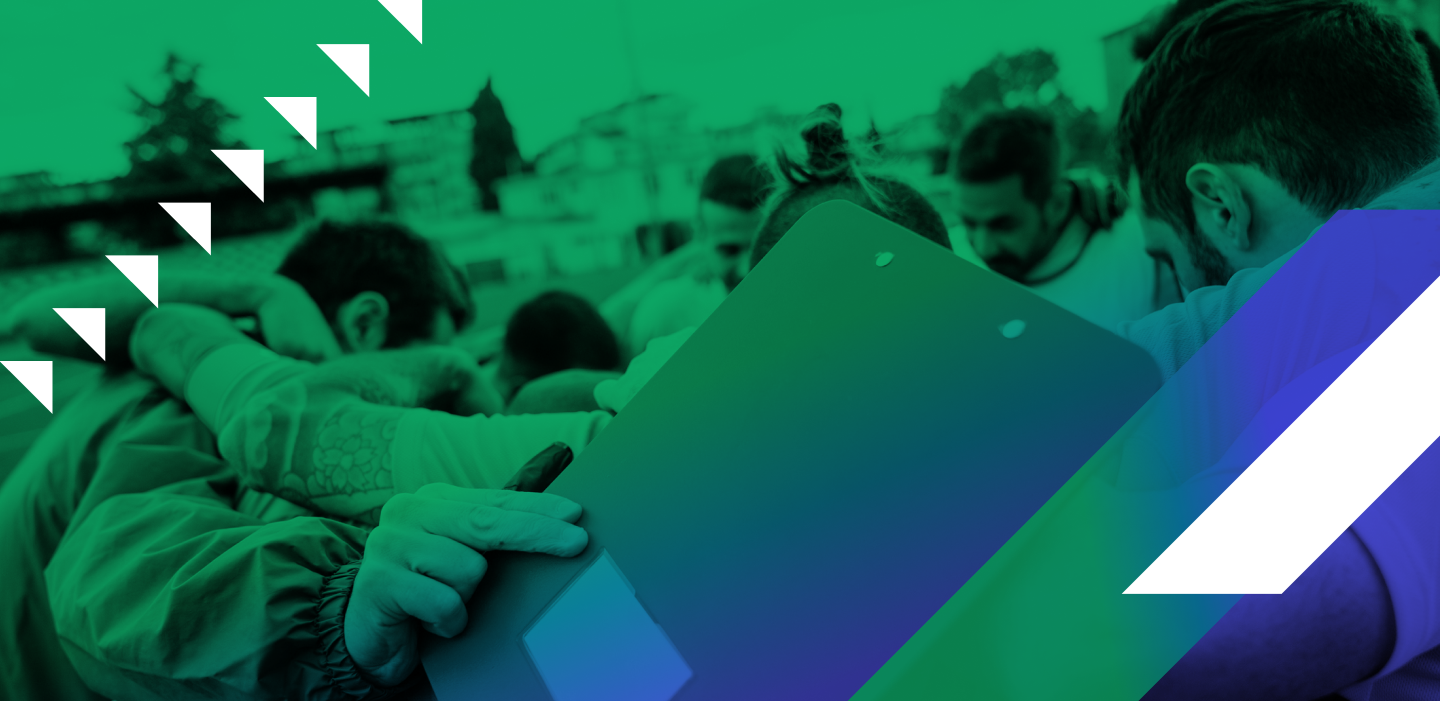
Aug 7, 2023
7 Ways to Enhance Customer Service Teamwork
Customer Supportcustomer experiencedistributed teamsremote teams
Customer service is a team sport. When your support team is in sync, customers don’t have to repeat information, and agents don’t need to ask the same questions. This speeds up case resolution times and provides a more consistent and satisfying support experience for customers.
The benefits of collaborative customer service extend beyond the customer. Teamwork in customer service can mean the difference between a stressful, overwhelming work environment and a supportive, productive one. When cases are handled collaboratively, agents can share the load, reducing the risk of burnout and increasing job satisfaction.
A strategic focus on teamwork can transform your support team into a well-oiled machine, delivering top-notch service that keeps customers happy and agents engaged. So, let’s dive in and explore how you can make teamwork the heart of your customer service strategy.
1. Start small with team changes
If your organization is entrenched in everyone working their cases, you might want to see a spontaneous leap to collaboration. But it’s a delicate process, and it’s why starting small can be a wise strategy. Small changes can help the team adjust to new ways of working and provide tangible evidence of the benefits of increased customer service collaboration.
First, target an area that’s not doing well, like system-down situations or a particular product area, and organize a small team to experiment with it. Use challenges or crises to encourage collaboration and demonstrate its benefits. Once you succeed there, expand to other areas of your support operations.
By focusing on small areas first and implementing new collaboration strategies, teams can start to see the benefits of working together more closely. You’ll also overcome the main obstacles to improving customer service teamwork: making it okay to ask for help (being vulnerable) and worth celebrating to help (instead of solving one’s own cases).
2. Create a skills matrix
Imagine you are a new support engineer. You get a case you don’t know how to resolve, so you decide to ask for help. But how do you know who can help? Finding the right expert for a particular part of the product, operating system, or networking protocol is typically very difficult. Even experienced support engineers often default to approaching familiar colleagues rather than the actual subject-matter experts.
To overcome this, develop a skills matrix for your team. This matrix lists each team member’s areas of expertise and proficiency, typically rated on three to five levels. The skills matrix will serve as a quick reference guide for the entire team whenever they need to ask for help with a case. This readily available information can significantly speed up resolution times and improve problem-solving.
Even when they exist, skills matrices are usually very poorly maintained. But many newer platforms like SupportLogic use AI to assign cases to customer service agents based on factors like skills match and case complexity. With this information already on hand, you can easily keep your skills matrix up to date and accessible so your team always knows who to ask for help.
3. Streamline team communication
Clear and effective communication helps everyone get on the same page, reduces misunderstandings, and fosters a culture of transparency and collaboration. But how can we make it easy for team members to offer and request help? The answer lies in leveraging the right tools and fostering an open communication culture.
In most organizations, support engineers are fully utilized, so the former issue is more acute, and it’s mostly a tool problem. For instance, the tracking system is Salesforce, but requests are made via Slack, and the two do not communicate.
Consider using communication tools that allow for real-time messaging, video conferencing, and file sharing. For instance, you could set up different Slack channels for different topics, such as a channel for case discussions, a channel for technical questions, and a channel for general team communication. Your support team can then easily mention others in the channel to start collaborating.
Platforms like Slack and Microsoft Teams also integrate with customer support platforms to automate case updates and enable collaborative problem-solving. Rather than manually informing your team about new and ongoing cases, you can set up these integrations to automatically send alerts to users or channels via a Slack bot. This way, everyone can stay informed and contribute to discussions in real time.
4. Reward your team for helping each other
I am convinced that teamwork in customer service is weaker than it should be because we only count case closures, not “assists.” In other words, if I work and close a case, I get one credit. If I work a case and help on another case, I get…one credit! Support engineers are rational: they will do what they need to hit their number.
This is where the concept of recognizing and rewarding assistance comes into play. By doing so, we can foster more customer service collaboration, which is crucial for delivering a top-notch customer experience.
Imagine a new support engineer who has just received a case and needs assistance. If the prevailing culture is one where team members are only focused on their own cases, the new engineer might struggle to find the help they need.
But what if we flipped the script? What if we implemented a system for recognizing and rewarding assistance? This could be a peer recognition program, a points system for assists, or even incorporating assists into performance reviews. By celebrating team members who frequently assist others, we can encourage a culture of team collaboration and mutual support.
It’s hard to measure effective help. (It’s easy to measure formal help, for instance, by counting notes in cases other than one’s own, but you can see the potential for gaming that approach.) Here are some ideas:
- Ask the case owner to rate the help received: This tells you how much value your support team gets from specific collaborators.
- Measure outcomes: Metrics like resolution times or customer satisfaction offer some objective insight into team performance.
- Implement random case audits: Helpful team members are likely to be consistently useful, so customer service managers don’t need to check every case.
The key is to find a method that accurately reflects the value of the help provided. After all, in a customer service team, every assist counts, and every assist brings us one step closer to providing an exceptional customer experience.
5. Assign an owner to every support case
Collaborative customer service is wonderful, and customers appreciate it when we collaborate on their behalf—but they also need order and predictability. Even the most collaborative organizations should assign an owner to each case, and their job is to resolve it while keeping the customer appraised of what’s happening. This approach ensures clear communication and a streamlined process for resolving customer issues.
Imagine a high-priority case where several team members are troubleshooting together. While this collaborative approach is beneficial, it’s equally important to have one person designated as the customer’s primary point of contact for the customer. Note that the owner should always be a support engineer, even if members of the engineering or operations teams are also working on the issue.
This person informs the customer about the case’s progress and coordinates the team’s efforts. If the case needs to be worked on around the clock, another person can be designated for the next shift to ensure seamless communication with the customer.
A customer support platform with intelligent case assignment and tracking can drastically simplify this process. When a new case comes in, this tool will assign it to a support engineer immediately, and they take accountability for delivering the best possible support experience. Not only does this significantly improve accountability, but it also helps to manage team workflows more efficiently.
6. Improve your case assignment process
Efficient case assignment ensures that customer issues are handled by the most suitable team member, leading to quicker resolution times and higher customer satisfaction. But how can we streamline this process to ensure every case lands in the right hands at the right time?
The answer: Leverage a customer support platform that allows for automatic case assignment based on predefined rules. These rules could be based on the support agent’s expertise, current workload, or other relevant factors. For instance, a platform like SupportLogic or Salesforce Service Cloud can automatically assign cases related to a specific product feature to the team member specializing in that area.
At Coveo, a leading AI-powered relevance platform, many support agents faced unfamiliar customer issues, resulting in a mean time to resolution (MTTR) that was stuck at four days for an entire year. After turning to SupportLogic for help, they used intelligent case routing to send new cases to the most qualified agents. These assignments were based on factors like availability, skills match, backlog, bandwidth, and history with the customer.
Within the first six months, Coveo slashed MTTR by 53% and increased their First Day Resolution by 31%. “The fact that you’re leveraging your top qualified agents to solve the case out of the gate definitely has an impact,” said Patrick Martin, VP of Customer Support at Coveo.
7. Make customer data accessible to everyone
In the world of customer service, access to customer data is a game-changer. It’s like having a secret weapon that allows your team to provide personalized service, understand the customer’s issue in depth, and save time by not having to search for relevant information.
To ensure everyone has access to this goldmine of information, you need a support platform that provides a unified view of customer data. That way, every team member can quickly pull up a customer’s history with your company, previous support cases, and any other relevant information immediately. This saves time and allows for more personalized and efficient customer service.
However, having the right platform is just the first step. It’s equally important to ensure that all team members are trained to use this platform and understand the importance of maintaining up-to-date customer data.
For instance, a support team could use a customer relationship management (CRM) system like HubSpot or Salesforce to store and manage customer data. If a customer mentions a problem they’ve had in the past, the support agent can quickly look up the details of that previous case to better understand the current issue. They can also note customer questions they might need help answering so their teammates have the latest information. This proactive approach helps your entire support team better understand customer needs so they can deliver excellent customer service.
Invest in customer service teamwork to transform your support experience
The benefits of a collaborative customer service team extend beyond the immediate improvements in efficiency and case resolution times. When your team works together effectively, they’re not just solving problems—they’re building customer relationships. They’re showing your customers that they’re not just a ticket number but a valued part of your business. This level of service can turn one-time customers into loyal advocates for your brand, driving customer retention and ultimately contributing to your bottom line.
To learn more about how AI-powered support operations can enable better customer service teamwork, explore a free trial of SupportLogic today.
Don’t miss out
Want the latest B2B Support, AI and ML blogs delivered straight to your inbox?





